Bowers Wilkins
Bowers & Wilkins PX7: highly effective noise canceling headphones
Aprox. 398€ - see price -
Two years after an interesting but imperfect PX, Bowers & Wilkins is launching its second mobile wireless headphones with active noise reduction, the PX7. Will it manage to worry the stars of the market this time?
Our review
Presentation
The PX7 is the new high-end mobile headset from Bowers & Wilkins and the direct successor to the PX of 2017. Like the latter, it is a noise-canceling Bluetooth headset in over-ear configuration, which directly confronts market stars like the Sony WH-1000XM3 and the Bose Headphones 700.
It has been available since autumn 2019 at an introductory price of € 399.
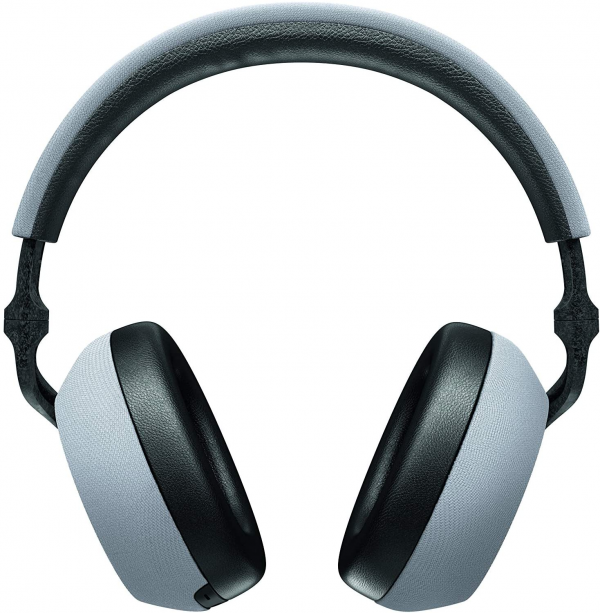
Ergonomics
The manufacturing quality of the PX7 is perfectly worthy of the high demands that Bowers & Wilkins has accustomed us to. Not only does it use the very elegant lines that have become emblematic of the helmets of the English brand, but it also benefits from a particularly careful assembly, making use of robust and quality materials. The only questionable point that we could raise concerns the frame of the arch, whose texture "slate type" can at first glance be confused with a simple very worn aluminum - but the effect is perfectly normal and voluntary.
These good impressions continue when you put the helmet on your head. Despite its relatively high weight of 310 g (compared to 250 g for the Bose Headphones 700 or the Sony WH-1000XM3, for example), the PX7 is extremely comfortable. Without being totally forgotten on the head, he can distribute the pressure of his headband and his atria in a remarkably uniform manner on the skull, and you can wear it for hours without feeling any discomfort.
Connectivity is particularly abundant. In Bluetooth, the PX7 is capable of multipoint connection to 2 sources simultaneously, with automatic selection of the broadcast stream (when one of the two source devices starts playing or receives a call, it automatically obtains broadcast priority). The helmet from Bowers & Wilkins rises here almost to the level of the Headphones 700 from Bose; "almost" only, because it has a very small drawback compared to the latter: on ignition, the PX7 automatically connects to the last paired device, and the second device must then be connected manually.
This inconvenience menu is very largely compensated by a wired connection which is not to be outdone. Not only does the headset of course come with a mini-jack cable, but it can also be connected directly via USB to a computer as an external audio device. Do you want more? We were also able to use this direct USB connection successfully on an iPad Pro 2018, a Google Pixel 3a and a PlayStation 4. Still? When the headset is used wired, whether via USB or mini-jack, it can maintain its two Bluetooth connections. Do not throw any more!
There is nothing wrong with the controls, which are completely exhaustive. Playback control, call acceptance, volume control and noise reduction control are accessible directly from the headphones, thanks to mechanical buttons - old school compared to tactile surfaces, yes, but so much more reliable and pleasant use!
In addition to this, the PX7 is fitted with pressure sensors in each of its ear cups, which not only allow the automatic pause of reading when you take off the headphones - and resume when you put them back on - but also avoid the headphones going to sleep automatically when worn without listening to music (on an airplane where you simply want to take advantage of the active noise reduction). The functionality is reminiscent of that offered by Parrot Ziks in their time ... with one ready difference: it works here with impeccable reliability, never without any untimely triggering. A real joy.
Unlike many of its recent competitors, the PX7 does not integrate any voice assistant natively, and is "only" capable of calling on the assistant of the phone to which it is connected. This is not a great loss ... especially since one would hardly experience any satisfaction in using an assistant with this helmet. The fault comes back to the microphone of the hands-free kit, unfortunately of very poor quality. Even in a very calm environment, the speech it picks up is far from ideally intelligible, both for a human interlocutor and for a speech recognition algorithm. This is the only real criticism that can be made of the Bowers & Wilkins helmet in terms of its practical aspects.
But we will still be able to conclude this ergonomics part on a positive note, by evoking the autonomy of the headphones, which we measured at 35 hours in Bluetooth connection using the aptX codec with activated noise reduction. It is even better than the 30 hours promised by the manufacturer, and this places the PX7 in the top peloton of helmets in its category.
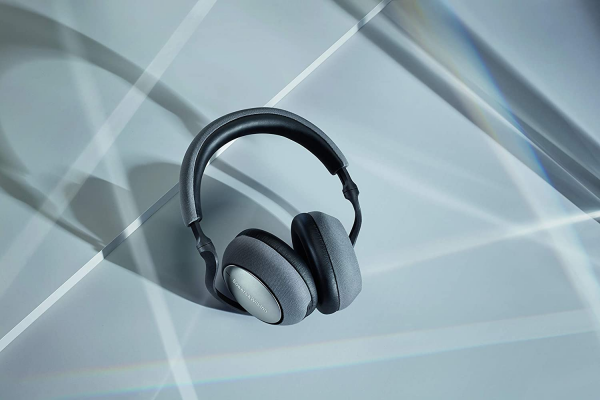
Audio
Bowers & Wilkins' reputation in the field of loudspeakers has certainly been known for decades, but the venerable British brand has never been able to fully convince us with its headphones. The PX7 unfortunately continues this trend, with performance far from uninteresting, but certainly not flawless either.
An observation that materializes first of all by this frequency response, to say the least, eccentric, completely out of sync with the very wise and "traditional" hi-fi signature that we usually associate with B&W. The colors are obvious, with this very violent "U" signature - especially, strangely, when the noise reduction is deactivated -, which gives a large prominence to the two ends of the spectrum.
The first contact is therefore extremely confusing. The very dull side of the rendering requires a period of accommodation - especially since it is unfortunately accompanied by some sensitive bass overflows on the low mids, which cause some confusion in the mixes richest in low frequencies. At the same time, it goes without saying that the tones are very noticeably tinted, especially those of medium sounds. Human voices, cellos or other acoustic guitars, for example, take a rather dark and distant turn.
But the great paradox of the PX7 is that all this does not prevent it from producing a generally detailed and curiously revealing signal on certain sound components. The reactivity and the dynamics of the mediums means that the latter, despite their position set back from the rest of the spectrum, are never masked by the other frequencies. On the contrary, they indirectly benefit from the accentuation of the acute extremes, which acts as a magnifying glass over the micro-details of the sound message (attacks and articulations of the sounds, room effects ...), for a sometimes surprisingly captivating result. So we are certainly a thousand miles from any form of transparency, but the PX7 still manages to give us a surprisingly rich perception of our music - at least on acoustic recordings, music unfortunately can tend to become a little too aggressive.
On the side of active noise reduction, the balance sheet is much less uneven: the PX7 climbs without difficulty level of stars of the genre signed Sony and Bose, with an attenuation of external noise greater than 20 dB on almost all of the audible spectrum - and which even manages to punctually exceed 30 dB, a threshold that even the aforementioned references never reach in our measurements!
The only minor weakness to be noted is the slight loss of efficiency around 2 kHz, close to the ear sensitivity peak, which is notably responsible in part for the fact that the PX7 is not quite as clever as the Sony in erasing human voices. The difference, however, is tiny.
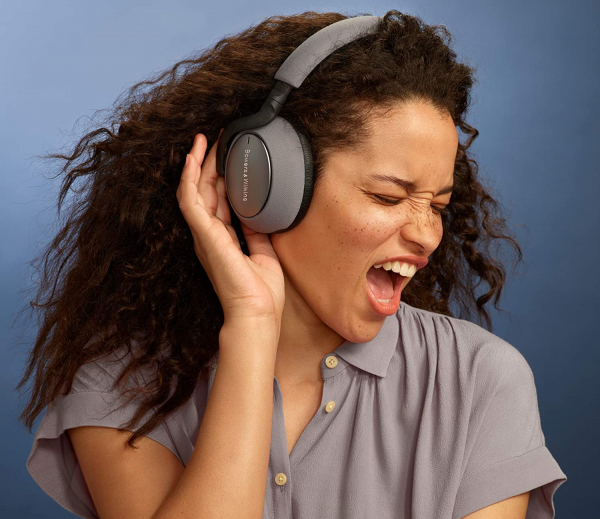
Conclusion
The PX7 is a headset full of paradoxes, notably sound, with its very colorful and unfaithful restitution, but also surprisingly rich in details. Assuming we adhere to this approach, we can then take full advantage of its other qualities, such as its abundant connectivity and its excellent active noise reduction. Otherwise, the essential Sony WH-1000XM3 and Bose Headphones 700 remain safer and more versatile choices.
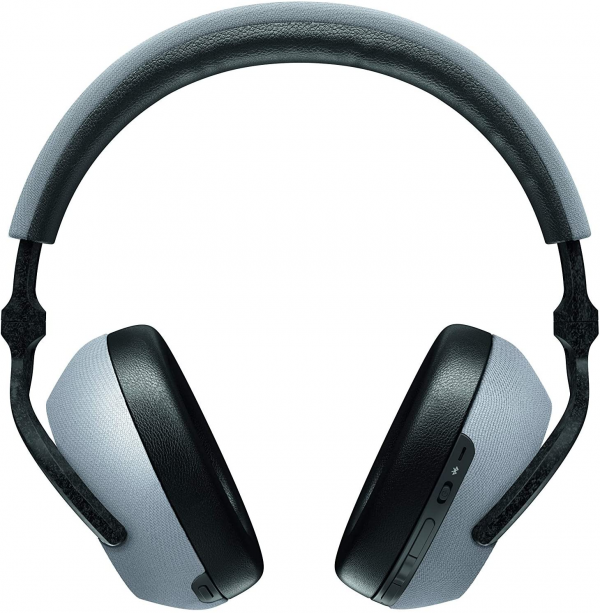
Reviews

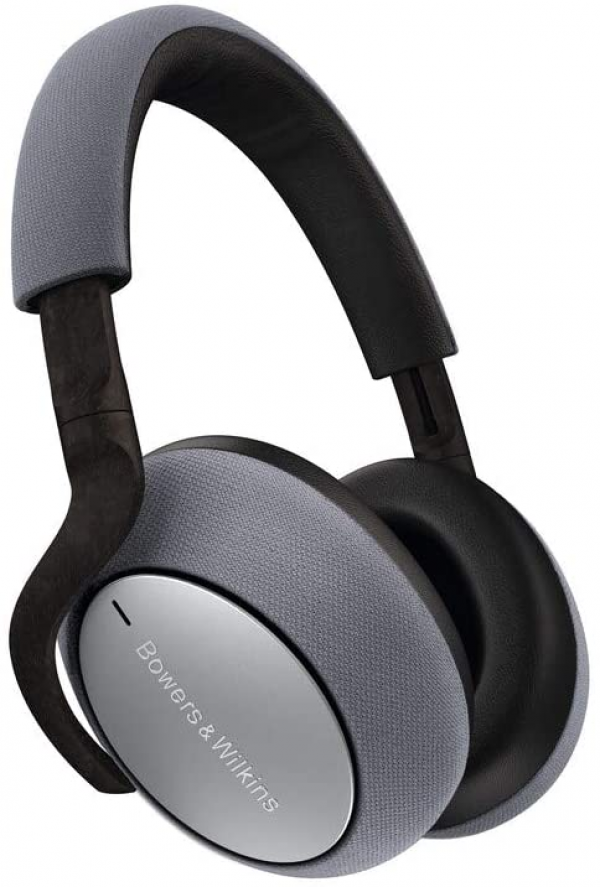
Best in class ANC headphones
I own the Sony 1000XM3, Bose N700, the previous Bose QC35 II, the predecessor Bower and Wilkins PX. I also tested the new Sennheiser Momentum 3 and Master and Dynamic M65 for a few days. This is by far the best among all of them. I do not proclaim myself an audiophile (pretentious term if you ask me), but I do like a good pair of headphones that reproduces music the way it is meant to be heard.
Pros
1. Sound quality is undoubtedly the best among all the above. Clean, wide soundstage, extreme clarity. Bass is on point. If you are a bass head, please look elsewhere. At the time of writing this review, B&W does not provide an equalizer in-app. So you cannot tune the bass even if you wanted to. I expect that B&W will resolve this in a future app update. But the default sound works well for my ears. The Sonys are more boomy and muddled in terms of bass and is pleasant enough. The Bose N700 is just bad in terms of sound quality. The Sennheisers and Master and Dynamic M65 are perhaps close in terms of sound quality.
2. (Auto-) ANC is great. There are some who prefer the stronger ANC of the Sony and Boses. I never liked the ANCs on those because the pressure in my ear gets too discomforting and the hit on sound quality is significant. I'd rather have a bit of noise than ear pressure. The PX7 has somehow managed to incorporate ANC that does not cause any pressure at all. In most instances, I leave ANC off since the passive NC is good enough. I only turn on ANC on flights. The effect on sound quality is barely perceptible and the suppression of the noise is effective enough for my ears. The Sennheisers and Master and Dynamic M65 have much worse ANC.
3. Comfort. These are miles ahead of the predecessor PX. I love my PX, but the clamp force is too strong and it does not fit all ears. The PX is also much heavier. The PX7 resolves all this with a much lighter carbon fiber construction. Clamp force is still quite strong but nowhere as strong as the PX. That said, the Sonys and the Bose QC35s are still more comfortable. I only have the PX7 for a week thus far. Maybe the clamp force will continue to decrease with time. Even at the current moment, there are no issues with hours of listening. But this obviously will depend on the shape of your head.
4. The Bluetooth 5 connectivity seems to be great. I had sporadic connection issues with the other headphones and none absolutely with the PX7 so far. The fact that you can connect two devices at once is a great advantage over the Sony XM3. For example, I use my phone for music when walking to my flight and go into my iPad for movie watching seamlessly when I am in my seat.
5. Misc. Auto-pause works as great as in the PX. The auto ANC mode seems to work well, though I generally prefer to control the ANC manually. The app is an aesthetic improvement over the old app for the PX, but rather basic at the moment - no EQ. The Sony and Bose apps are better developed. Master and Dynamic has no whatsoever app.
6. Power. These charges on USB-C like the other flagships. I have no issues with any USB C source. This cannot be said for the Sennheiser, which are extremely fussy in terms of power source, eg, I cannot charge the Momentum 3s using my MacBook Pro's charger! Battery life is great.
7. Design. Matter of taste, but the Master and Dynamic M65 has the best design in my opinion and the previous PX is a close second. Maybe the Bose N700 is third. The PX7 does feel cheaper than PX because it is no longer metal and hefty. The upside is of course comfortable. It still feels more premium than the Sonys and Bose QC35.
To summarize, this is certainly the best ANC headphone at the current moment. It is expensive but on par with other new flagships. The sound quality is unrivaled. The ANC is a matter of taste, but if you are someone who hates uncomfortable, strong ANC, these are for you. Comfort is much better over PX, but Sonys still win on this.
Minor update
----------------
1. Portability. These fold flat and are quite portable without the case. But the case is pretty large compared to the Sony XM3. Weight + volume - Sony XM3 definitely more portable.
Great sound great comfort great look
Loving them so far. Been hunting for good anc headphones. Had the xm3 didn't like them at all I don't understand that hype. Had the qc35 they are great at noise canceling and comfort but lack in sound and build. Got the nc700s returned them after a week. They just didn't do it for me. The NC was great but everything else was lackluster. I really wanted to love them too. Then I had the b & o which sounded great but we uncomfortable and heavy and the anc was not great.
I pre ordered these and had high expectations. Which as of now I can say they have met.
The sound is expansive and detailed with great bass and sold miss and hi's.
As far as comfort they are great and roomy no heat after wearing them for 7 hours at work.
Build quality seems great let's see if the fabric can stand the test of time.
The case is decent.
Everyone in the office I have shown said they look really good.
If you're on the fence between Sony Bose and these I'd go with these.
I'm not a fan boy to any of them but I've been using Bose for years until the nc700s dropped the ball.
Just my opinion.
But if I'm spending 400 $ I want exceptional sound.
Lastly I'd say the Anc is pretty good on these. Not Bose good. But no ear pressure at all if that's an issue for you. Haven't been on any airplanes yet so I guess we'll see.
Sorry for the long rant